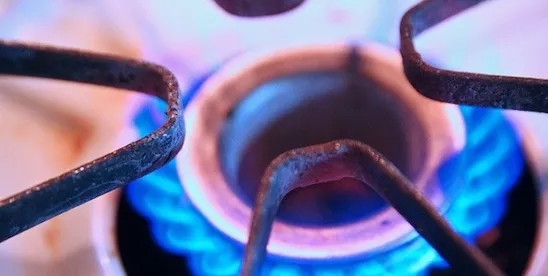On October 19, a federal task force released a Final Report outlining recommendations for industry and government in the wake of the 2015 natural gas leak at Aliso Canyon in southern California. The Interagency Task Force on Natural Gas Storage Safety (“Task Force”), created by Congress in the Protecting our Infrastructure of Pipelines and Enhancing Safety (PIPES) Act of 2016, convened to analyze the Aliso Canyon incident and to recommend ways to reduce the likelihood of future leaks from underground natural gas storage facilities.
The Final Report sets out 44 recommendations for industry and government to take in order to ensure the long term safety and reliability of natural gas storage facilities across the United States. PHMSA, the federal pipeline safety regulator, will consider the Task Force’s recommendations as it prepares an Interim Final Rule (“IFR”) expected later this year that will establish new safety regulations for underground gas storage facilities. See also PHMSA Advisory Bulletin ADB-2016-02, Pipeline Safety: Safe Operations of Underground Storage Facilities for Natural Gas. The Final Report estimates there are 400 active underground natural gas storage wells operating in 25 states. Many of these storage wells were constructed prior to 1980 and are the most likely to receive scrutiny by PHMSA in its upcoming IFR.
The Aliso Canyon Leak and the Task Force
Nearly one year ago, in October 2015, a natural gas leak was discovered at a well within the Aliso Canyon Underground Storage Field in southern California. The compromised portion of the well casing responsible for the leak was extremely difficult to access. The well was not ultimately sealed until February 18, 2016, nearly four months later, and after federal and state government intervention and the evacuation of nearby residents and businesses.
The Aliso Canyon incident led Congress to add a provision to the PIPES Act of 2016, establishing the multi-agency Task Force. The statute charged the Task Force with analyzing the contributing factors to the Aliso Canyon incident, the overall impact, and recommendations for improving underground storage operations in the future. The PIPES Act of 2016 also required the U.S. Department of Transportation’s Pipeline and Hazardous Materials Safety Administration (“PHMSA”) to establish, within two years of enactment, regulatory safety standards for operating underground natural gas storage facilities.
Led by the Secretary of the U.S. Department of Energy, the Task Force includes members from PHMSA, the U.S. Environmental Protection Agency (“EPA”), the Federal Energy Regulatory Commission (“FERC”), the Department of Health and Human Services, the Department of Commerce, the Department of the Interior, and state and local governments.
Key Recommendations in the Final Report
The Task Force focused in three areas: (1) minimizing the risk of well failures; (2) reducing environmental and health impacts of major leak incidents; and (3) understanding energy reliability implications. Key recommendations concerning well integrity are highlighted below.
1. PHMSA should consider mandating and enforcing industry-recommended practices reflected in API RP 1170 and 1171.
a. These practices should be supplemented with reporting and recordkeeping requirements as necessary. Experience with inspections and oversight of the written plans called for in API RP 1170 and 1171 and their implementation, along with the recommendations and studies discussed elsewhere in this report, should inform additional requirements in the future.
2. Operators should phase out wells with single-point-of-failure designs.
a. New wells should be constructed to have double barriers.
b. Older wells with single-point-of-failure designs should have a risk management plan to maintain safe well operating pressure that includes rigorous monitoring, well integrity evaluation, leakage surveys, mechanical integrity tests, conservative assessment intervals, and in most cases a plan to phase out these designs.
3. Operators should undertake rigorous well integrity evaluation programs. Such evaluations should include:
a. a compilation and standardization of all available well records relevant to mechanical integrity;
b. an integrity testing program that includes leakage surveys and cement bond and corrosion logs to establish that all wells are performing as expected;
c. documentation of a risk management plan to guide future monitoring, maintenance, and upgrades;
d. establishment of design standards for new well casing and tubing; and
e. establishment of safe operating pressures for existing casing and tubing.
4. Operators should prioritize integrity tests that provide hard data on well performance.
a. Monitoring, logging, and mechanical integrity testing must be top priorities for lowering risk to well integrity, as they provide hard data on well performance.
b. Well integrity testing should be executed with the goal of minimizing total risk, which includes risks to storage integrity associated with the testing, risks to personnel, etc.
c. Well integrity testing should use multiple methods in lieu of a single diagnostic.
5. Operators should deploy continuous monitoring for wells and critical gas handling infrastructure.
a. Continuous monitoring systems should be deployed at the ground surface and through the multiple casing strings for wells and critical gas handling infrastructure. This includes monitoring of annular and tubing pressure, as well as surface leak detection.
Other broad recommendations include:
1. Risk Management Plans should be comprehensive and reviewed periodically.
2. A “Unified Command” should be created when human health and environmental threats are present and multiple jurisdictions are involved in the response effort.
3. State and local agencies with natural gas storage facilities should establish a robust ambient air monitoring network in the surrounding communities in order to adequately characterize the potential health impacts associated with natural gas leaks.
4. Government and stakeholders should collaborate to determine “background levels of methane and other pollutants of concern” to better interpret monitoring results during a leak event.
5. States should review their legal authorities to require greenhouse gas mitigation of fugitive emissions from underground natural gas storage facilities.
A Call for Additional Research and Studies
The Final Report outlines areas where more information is needed. The Task Force recommends that DOE and DOT conduct a joint study of downhole safety valves and casing-wall thickness assessment tools. The Task Force also concludes that State and/or Federal agencies should identify the locations of unknown wells near underground gas storage facilities and should collect and analyze data on the proximity of underground storage facilities to population centers.
What’s Next?
While it remains to be seen how the various federal, state and local agencies, stakeholders and industry groups will take heed of the Task Force’s recommendations, PHMSA at least made clear that it would take the recommendations in the Final Report into consideration in developing the forthcoming IFR. We expect that IFR to be released before 2017.




 />i
/>i

